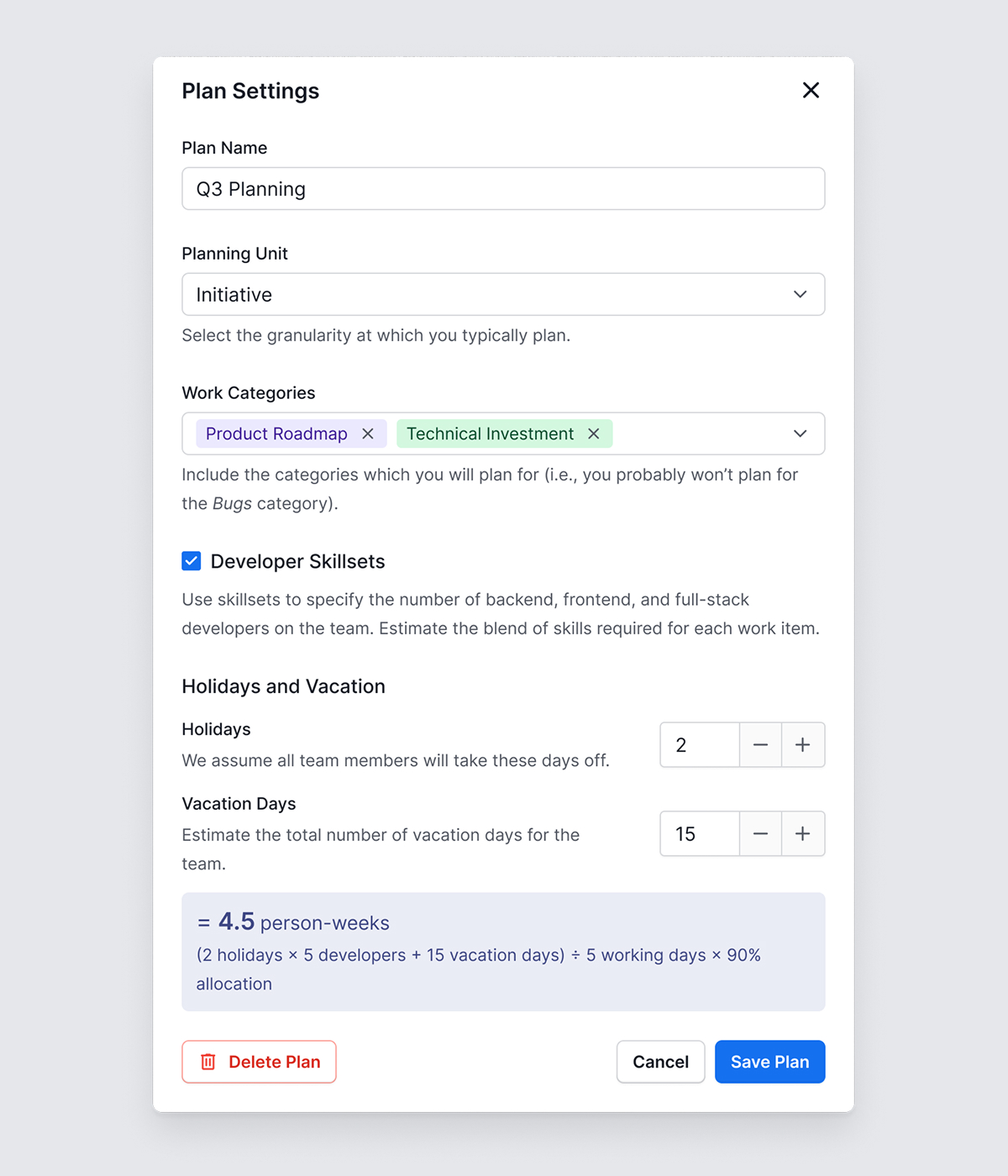


I designed a capacity planning tool for engineering leaders. It became a key competitive differentiator for Jellyfish and a core part of a new delivery-centric product SKU that unlocked new sales opportunities.
Engineering leaders are often asked to determine what can be realistically delivered within the next month, quarter, etc. Capacity planning is ultimately a process about aligning people and projects, and helps organizations answer questions like:
In practice, the process is fragmented and spreadsheet-driven, and teams struggle with setting realistic goals and avoiding overcommitment. Overly optimistic plans lead to downstream delays and the erosion of trust between engineering and other departments.
In collaboration with my team, I designed a capacity planning tool that enables engineering leaders to explore delivery tradeoffs for future periods. Building on our approach to scenario planning, Capacity Planner lets users create plans based on:
The tool provides a simple summary of the team’s planned capacity versus total capacity, allowing users to freely explore a variety of delivery scenarios and understand the impact of different options on their capacity. Capacity Planner estimates the amount of effort required for each work item based on historical velocity data.
Initial user feedback drove key enhancements, including support for vacation/ holiday time, breakdown of engineer skillsets (frontend, backend, and full-stack), and selection of specific developers for each work item.
Since GA release, Capacity Planner has seen increasing numbers of users week over week and has been used to create over 500 plans. Weekly active users spike during quarter transitions, confirming its role in quarterly planning processes.
Alongside Scenario Planner, Capacity Planner became a core part of an experimental “Delivery-only SKU” which was successfully sold to an enterprise customer, further proving the value of the Capacity Planning use case and of planning tools more generally. A dedicated Jellyfish product team continues to support and enhance the tool.
The capacity card on the top right is updated as inputs to team size, planned allocation, and planned work are modified.
The initial state loads historical information about team size, work allocation, and projected completion dates as a starting point for the plan.

Skillset estimation helps users align people and projects. Users capture the skillset breakdown for the team, as well as a rough estimate of skillset requirements for each work item. These requirements are summed across the set of work items to allow comparison with the team's skills.

Plan settings include the ability to capture holidays and vacation time, which increases plan accuracy. This was one of the most frequent asks from early testers.
